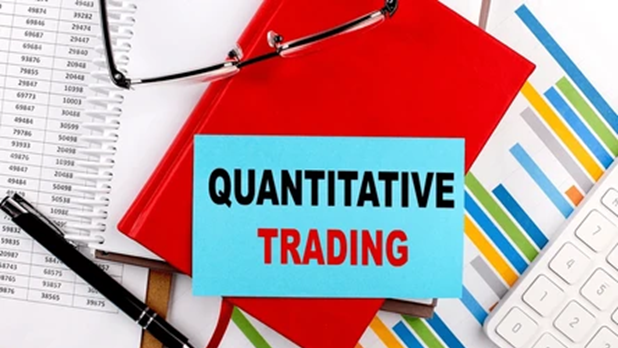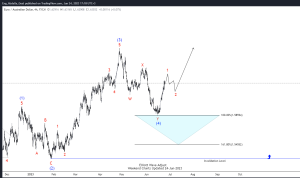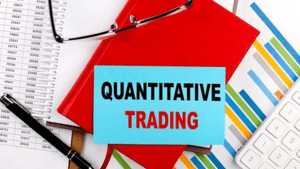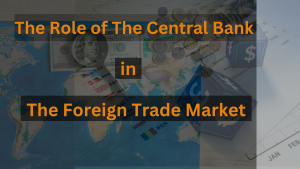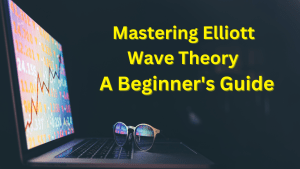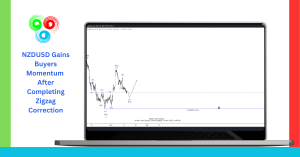Quantitative Trading: Quantitative trading comprises trading methodologies given quantitative examination and depends on numerical computations and mathematical estimations to recognize trading open doors. Cost and volume are two of the most widely recognized inputs utilized in quantitative examination as fundamental contributions to numerical models.
What is quantitative trading?
Since quantitative trading is much of the time utilized by financial establishments and flexible investments, the trades are regularly enormous and can include the trading of countless stocks and different protections. Be that as it may, quantitative trading is turning out to be more popular among personal financial backers.
Figuring out quantitative trading:
Quantitative traders utilize current technology, math, and the accessibility of exhaustive information bases to make judicious trading choices. Quantitative dealers take a trading method, make a model utilizing math, and foster PC programs that apply that model to verifiable market information. The model is then tested and advanced. If the outcomes are positive, the system will become acquainted with the market, progressively utilizing genuine capital.
What quantitative trading models work can best be made sense of through a relationship. Consider a weather conditions figure in which a meteorologist predicts a 90% chance of a downpour while it is bright. Meteorologists arrived at this outlandish resolution by gathering and dissecting environmental information from sensors across the area.
A quantitative PC investigation uncovers explicit examples within the information. If these examples are contrasted with similar examples uncovered in verifiable environment information (back-testing) and the outcome is downpour 90 out of multiple times, meteorologists can reach safe determinations; then we get a 90% forecast. Quantitative traders apply this equivalent cycle to financial business sectors to settle trading choices.
Essential parts of quantitative trading:
The two most important elements in quantitative trading are cost and volume, and quantitative techniques incorporate factual trade, algorithmic trading, and high-frequency trading. This strategy is speedy and normally utilizes a transient speculation skyline.
Quantitative brokers utilize quantitative apparatuses like oscillators and moving midpoints to make their quantitative trading systems. Additionally, there is the accessibility of current technology, math, and exhaustive data sets that quantitative traders use to pursue levelheaded trading choices.
Quantitative trading system:
All quantitative trading systems comprise four key parts:
1. Recognizing your methodology:
The underlying phase of the quantitative trading process starts with an examination interaction that recognizes a trading methodology and decides if that procedure is reliable with different techniques utilized by the dealer.
2. Back-test your system:
The motivation behind methodology back-testing is to comprehend whether the system recognized in the initial step is productive when applied to verifiable or out-of-test information. This is done to anticipate how the system will act. Be that as it may, great back-test results don’t ensure a positive outcome.
3. Execution system:
The execution system is the interaction by which the technique produces the list of trades and the agent executes them. Execution systems can be robotized or semi-mechanized. The primary considerations while making an execution system are points of interaction with mediators, decreasing trade expenses, and deviation of live system execution from tried execution.
4. Risk management:
Quantitative trading implies a few dangers, including mechanical gambling and mediator risk.
Benefits of quantitative trading:
Experienced brokers who don’t utilize quantitative trading systems can make effective trading choices on a unique number of stocks before the huge amount of approaching information overpowers the dynamic interaction.
Quantitative trading methods computerize assignments that financial backers use to physically finish. The fact that it hinders a trader’s capacity makes sentiments in a similar manner an important perspective. While trading, it very well may be ravenousness or dread. Feelings just disrupt levelheaded reasoning, which frequently prompts misfortunes. Quantitative trading takes out the issue of “feeling-based trading” because numerical models and PCs don’t have such issues.
Drawbacks of quantitative trading:
Financial business sectors are exceptionally unique, and quantitative trading models should be dynamic to function admirably in those conditions. All things considered, many quantitative traders foster models that create transient gains considering current economic situations and can’t adjust to changes in economic situations.
Quantitative trading example:
Contingent upon the trader’s exploration and inclinations, quantitative trading calculations can be modified to assess different stock-related boundaries. Consider the instance of in-dealer forced money management. They can decide to compose a straightforward program to pick winners based on bullish market patterns. During the following business sector upturn, the program purchases those stocks.
This is a straightforward illustration of quantitative trading. Regularly, different boundaries are utilized to choose a complicated blend of stocks intended to expand benefits, going from specialized examination to esteem stocks and crucial investigation. These boundaries are customized in the trading system to exploit market developments.
FAQs:
Do quantitative dealers rake in tons of cash?
Quantitative brokers are much more popular on Money Road since they should have a specific degree of ability, preparation, and numerical information. Many quantitative brokers have postgraduate educations in fields like applied measurements, software engineering, and numerical displaying. Therefore, fruitful quants can rake in some serious cash, particularly if they are utilized by mutual funds or effective trading organizations.
What is a quantitative dealer?
Quantitative dealers (quantitative for short) utilize numerical models and huge informational indexes to distinguish between trading valuable open doors and trade protections.
How would you turn into a quant?
To turn into a quantitative dealer, you want uncommon abilities and an interest in everything math-related. A four-year college education in science, a graduate degree in financial design or quantitative financial demonstrating, or an MBA will assist you with landing the position. Many examiners will likewise have a Ph.D. in these or other comparative fields. However, in postgraduate education, quants additionally need insight and knowledge of information mining, research methods, measurable examination, and mechanized trading systems.
What is the contrast between algorithmic trading and quantitative trading?
The fundamental distinction is that algorithmic trading permits you to robotize trade choices and execution. People can be quantum as well, yet PCs are a lot quicker and more exact than even the most gifted traders.
Where could you figure out how to trade algorithmically or quantitatively for nothing?
Quantitative trading requires dominance of math, measurements, and programming, so you can’t improve at it simply by perusing a couple of books. Rather, fruitful quants contribute a great deal of time and cash to conventional schooling, industry certificates, and self-review. Moreover, the expense of trading systems and a foundation to begin trading is high, and capital is concentrated.

